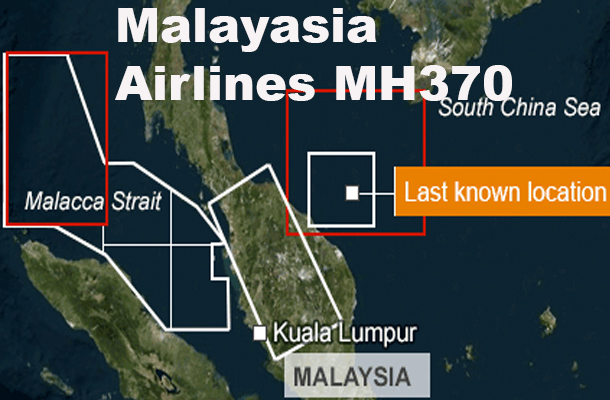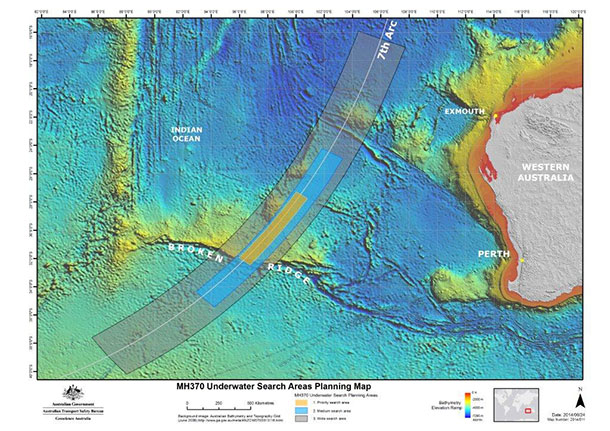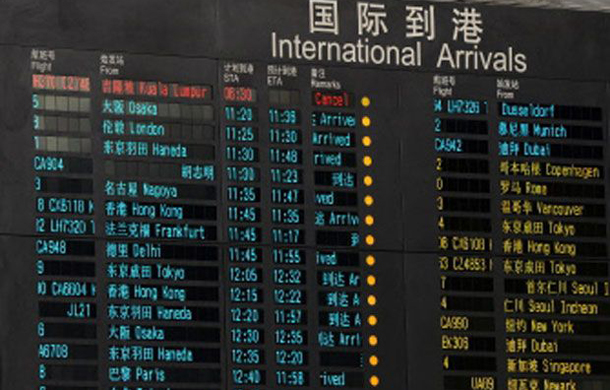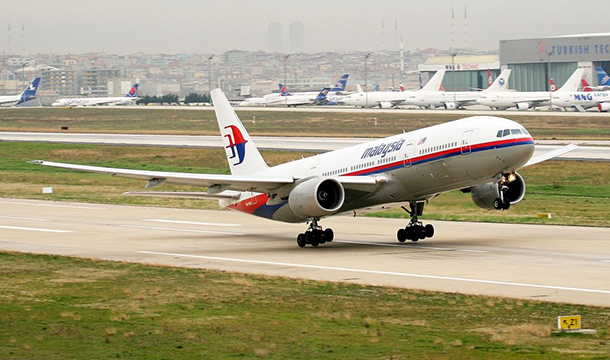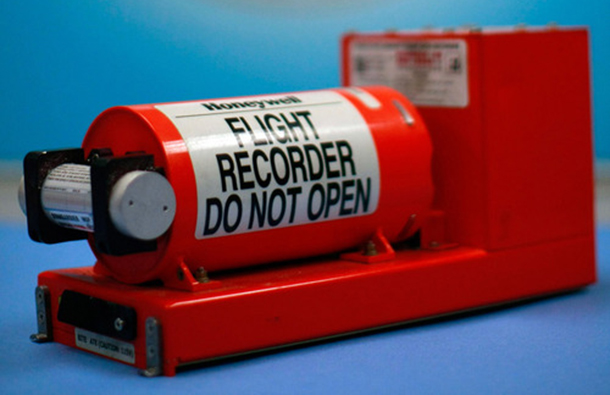

KUALA LUMPUR – INTERNATIONAL – The search for the black box is going to be critical in the investigation of the Malaysia Airlines Flight MH370. There is an estimated ten days left in the battery life of the flight data recorder. In this case, the flight data recorder, likely more than the flight voice recorder which only records two hours of flight deck conversation, is the more important tool investigators will need.
Families of the passengers and crew onboard Malaysia Airlines Flight MH370 are now left with many questions. Officials are trying to answer those question, often to the expressed dissatisfaction of many of the relatives.
Reaching the conclusion that the flight went down in the southern Indian Ocean came about as a result of British company Inmarsat.
The company that specializes in satellite and safely communications played a huge role in the search for Malaysia Airlines flight MH370 began immediately after the aircraft disappeared. The company provides the satellite connections for many aircraft. In the case of MH370 – the company started examining the data from the ‘handshakes’ between the aircraft and the satellite network.
British company Inmarsat calculated the Boeing 777-220 had flown along one of two routes. First an arcing north flight path, and second a south flight path.
Those ‘handshakes’ from the satellite – along with calculations about the missing aircraft’s speed helped Australian and American officials, including experts from the National Transportation Safety Board to narrow down the search area to just 3 per cent of the southern corridor on March 18th.
Press Briefing by Hishammuddin Hussein, Minister of Defence and Acting Minister of Transport
Introductory statement
As the search for MH370 continues, we remain focused on narrowing the search area.
With such strong co-operation from our international partners, the challenge is no longer diplomatic. It is now primarily technical and logistical. Because the scale of the investigation is now much more complex, the release of technical and logistical information will be handled differently. As you have seen today, this means that Malaysia Airlines will take the lead in communicating with the families.
As the search area has narrowed, new challenges have arisen, including managing resources in a remote search and rescue effort. We continue to work closely with our friends and partners as we seek to marshal more specific resources in support of the operations in that area.
1. New data
Last night the Prime Minister announced that according to new analysis of satellite data, Inmarsat and UK Air Accidents Investigation Branch (AAIB) have concluded that flight MH370 ended in the southern Indian Ocean.
Today I will provide further details of how the data was analysed, as provided to us the UK AAIB. This information is quite technical in nature. So although I will give you as much information as I can, I will not be in a position to answer questions about this data analysis today.
However, we will accept written questions which will be answered as soon as possible. We will be providing this information as a press release at the end of this press conference. This is the information provided to us by the AAIB.
2. Further details
In recent days Inmarsat developed a second innovative technique which considers the velocity of the aircraft relative to the satellite. Depending on this relative movement, the frequency received and transmitted will differ from its normal value, in much the same way that the sound of a passing car changes as it approaches and passes by. This is called the Doppler effect.
The Inmarsat technique analyses the difference between the frequency that the ground station expects to receive and that actually measured. This difference is the result of the Doppler effect and is known as the Burst Frequency Offset.
The Burst Frequency Offset changes depending on the location of the aircraft on an arc of possible positions, its direction of travel, and its speed. In order to establish confidence in its theory, Inmarsat checked its predictions using information obtained from six other B777 aircraft flying on the same day in various directions. There was good agreement.
While on the ground at Kuala Lumpur airport, and during the early stage of the flight, MH370 transmitted several messages. At this stage the location of the aircraft and the satellite were known, so it was possible to calculate system characteristics for the aircraft, satellite, and ground station.
During the flight the ground station logged the transmitted and received pulse frequencies at each handshake. Knowing the system characteristics and position of the satellite it was possible, considering aircraft performance, to determine where on each arc the calculated burst frequency offset fit best.
The analysis showed poor correlation with the Northern corridor, but good correlation with the Southern corridor, and depending on the ground speed of the aircraft it was then possible to estimate positions at 0011 UTC, at which the last complete handshake took place. I must emphasise that this is not the final position of the aircraft.
There is evidence of a partial handshake between the aircraft and ground station at 0019 UTC. At this time this transmission is not understood and is subject to further ongoing work. No response was received from the aircraft at 0115 UTC, when the ground earth station sent the next log on / log off message. This indicates that the aircraft was no longer logged on to the network.
Therefore, sometime between 0011 UTC and 0115 UTC the aircraft was no longer able to communicate with the ground station. This is consistent with the maximum endurance of the aircraft.
This analysis by Inmarsat forms the basis for further study to attempt to determine the final position of the aircraft. Accordingly, the Malaysian investigation has set up an international working group, comprising agencies with expertise in satellite communications and aircraft performance, to take this work forward.
3. Technical background
The new analysis I have described above was convincing enough for the AAIB to brief the Prime Minister that MH370 flew along the southern corridor, and that its last position was in the middle of the Indian Ocean, west of Perth. Within a few hours, the families had been informed, and the Prime Minister announced the new development to the world.
As the Prime Minister stated, this type of analysis has never been done in an investigation of this sort. There remains more work to be done, and we are grateful to Inmarsat, AAIB and the international investigations team, who are continuing to work with the Malaysian authorities. This is a developing situation, and as soon as we know more, we will share it.
4. Operational update
As a result of this new data analysis, the search and rescue operation in the northern corridor has been called off. We have also stopped the search and rescue operation in the northern part of the southern corridor, close to Indonesia.
All search efforts are now focused in the southern part of the southern corridor, in an area covering some 469,407 square nautical miles, as against the 2.24 million square nautical miles which we announced on 18th March.
We are currently working to further narrow down the search area, using the four methods I mentioned previously: gathering information from satellite surveillance, analysis of surveillance radar data, increasing air and surface assets, and increasing the number of technical and subject matter experts.
On the assets deployed, 2 Korean aircraft left Subang airport for Perth this morning, to help in the multinational search operation. No flights from Perth to the search area took place today, due to bad weather. 6 Chinese ships are currently in the search area. They are expected to arrive within the vicinity of MH370’s last known position by tomorrow morning. These ships include the ice breaker ‘Xue Long’.
HMAS Success is also currently in the search area.
The American Towed Pinger Locater – an instrument that can help find a black box – is currently en route to Perth and will arrive tomorrow. The system will be fitted onto the Australian ship Ocean Shield, which is due to dock in Perth on 28th March. The Ocean Shield, fitted with the Towed Pinger Locater, is due to arrive in the search area on 5 April.
5. Concluding remarks
The new analysis shared with the investigation by Inmarsat and the AAIB has focused our efforts on the southern part of the southern corridor.
Although yesterday’s news was incredibly hard for the family members, as our Prime Minister said, it was released out of a commitment to openness and respect for the relatives, two principles which have guided the investigation.






